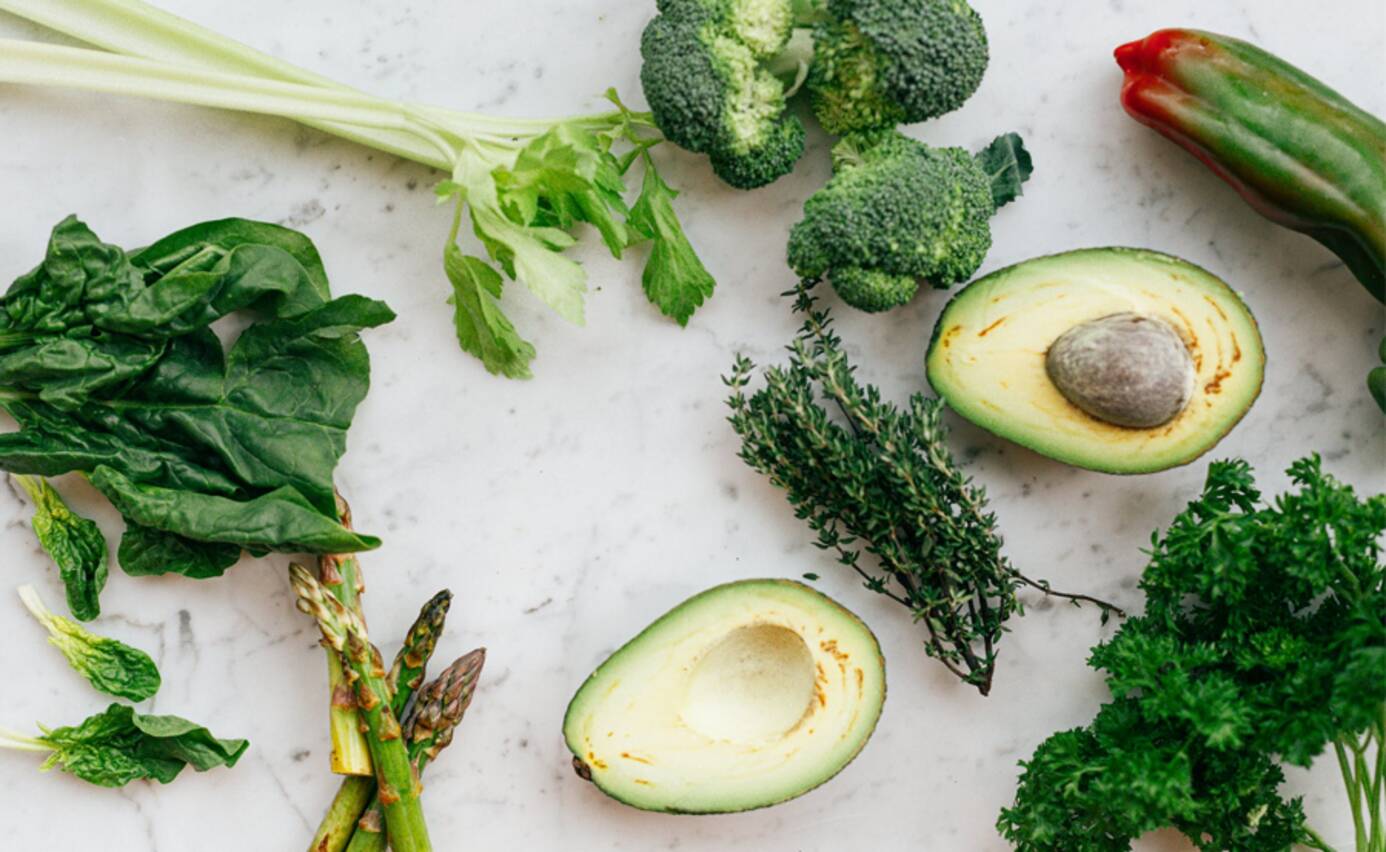Healthy eating
Over the past couple of years, superfoods have emerged as a trend that people can’t seem to get enough of. However, as with all new trends comes scepticism and bold claims that certain foods can rewind the signs of ageing, help ease painful stomach problems and even prevent cancer.
“Having a balanced and nutrient-rich diet is vital to ensure you have high energy levels, feel positive and are healthy”, shares Creative Nature. “Superfoods” are classified as a group of foods that are very high in vitamins and minerals and are nutritionally very dense. In line with a balanced diet, incorporating a range of “superfoods” in your diet will ensure you provide your body with substantial amounts of fibre, vitamins, minerals and antioxidants and can help you reach your nutritional needs.
What are the best superfoods in the world?
•Salmon
•Spinach
•Blueberries
•Cacao Nibs
•Almonds
•Turmeric
•Broccoli
•Quinoa
•Garlic
•Kale
Salmon
What makes salmon a superfood?
It’s the combination of vitamins and minerals that can be found inside salmon which make it a superfood. Boasting a combination of omega-3's, selenium, and vitamins A and D, your body’s immunity can vastly improve with the addition of salmon to your weekly meal plans. Not only is it a great source of lean protein, but it can also help your eyesight thanks to the omega-3s, which is essential as you age.
If you find that your skin frequently becomes inflamed and you suffer from conditions such as eczema and psoriasis, salmon is a great way of combatting this due to its anti-inflammatory properties. Keeping your skin in top condition with your diet also means that it will be more receptive to skincare, boosting the overall appearance to make you appear youthful and provide you with a natural glow.
Your brain function is highly important, and as a result of the fatty acids in the fish, as well as vitamin B12, you may find that your mental agility improves, having increased cognitive function. Omega-3 is the biggest contributing factor to salmon’s superfood status, however. Salmon is one of the only sources of this long-chain fatty acid, which is great for improving your cardiovascular health and can help reduce the risk of heart attacks.
How to Eat More Salmon
The taste of salmon is slightly different to other fish in that it doesn’t have a stereotypical “fishy taste”. As a result of this, there are plenty of recipes for you to try. Although salmon has a plethora of different properties that are essential in your diet, it is important to ensure that you’re not eating too much of the fish. High in protein, it can help you feel fuller for longer, as well as increase your metabolic rate. The NHS recommends 2 portions of fish a week, which should be at approximately 140g, but there are many ways in which you can add it to your diet. Its versatility means that it can be grilled, fried, baked or even eaten out of a tin (ensuring that it is BPA free).
Spinach
What makes spinach a superfood?
Low in calories, spinach is a great addition to your diet due to it being incredibly versatile. There are so many different things that you can do with the leafy green, that it often finds its way into recipes and meal plans. Loaded with vitamins, including A, D, E and K, minerals can also be found in spinach, making it a worthwhile addition to your everyday diet. Spinach has always had a status as a superfood, and its anti-carcinogenic properties, in collaboration with antioxidants mean that it is a great food for those who suffer from painful stomach conditions. Its anti-inflammatory properties can help reduce symptoms of IBS and help settle uneasy stomachs.
It’s not uncommon for your diet to be high in acid. However, spinach is a fantastic way of combatting this due to its alkalising properties. The minerals that can be found in it help prevent the negative side effects that come as a result of an acidic diet, such as low energy, heart conditions and weight gain.
Heal With Food found that “A case-control study published in The Journal of the American Medical Association in November 1994 found that the study participants in the highest quintile of carotenoid intake had a 43% lower risk for age-related macular degeneration (AMD), a leading cause of blindness in adults, compared with those in the lowest quintile.” Spinach is packed with the carotenoid Vitamin A, and one ounce can give you over half of your recommended daily allowance.
How to Eat more Spinach
If you’re pregnant, you could benefit from increasing the portions of spinach in your diet. Its folic properties are fantastic at preventing problems at low gestational age and is highly recommended by doctors and midwives. Fortunately, spinach is easy to cook, with it available both fresh and frozen for your convenience. If buying fresh, it is important to wash the leaves before eating. However, do not expose it to water and place back into your fridge, as this can cause it to spoil quicker.
In terms of cooking, it can be eaten raw or cooked, with steaming a favourite method of many or even added to a smoothie. It is important to bear in mind that spinach can reduce when cooking, so make sure that you have enough on hand when preparing a meal.
Blueberries
What makes blueberries a superfood?
Fibre, vitamins and manganese can all be found inside one of the smallest berries. One cup of blueberries is just 84 calories, as they are composed of 85% water, but have 4 grams of fibre, as well as 36% of your recommended daily intake of vitamin K.
One thing that most superfoods have in common is that they are antioxidants, and there is no better source than a blueberry. Known for its anti-ageing properties, antioxidants are also suggested to lower the risk of cancer.
NHS website, Modality, claims that: “while the evidence is inconclusive, it is thought that blueberries may relax the walls of the blood vessels, which may help reduce this risk of atherosclerosis – hardening of the arteries. Atherosclerosis can increase the risk of a heart attack and stroke. A small study in 2015 involving 48 post-menopausal women, found that women who were given blueberry powder supplements over the course of eight weeks experienced a small, but clinically significant, drop in blood pressure.
The Wild Blueberries Association of North America agrees that they are imperative if you’re looking to improve your diet: “We don’t get a second shot at a new body so why not fuel the one we have with superfoods recognized for delivering the goodness our bodies need to reduce inflammation, fight chronic disease and improve our health. Superfoods like Wild Blueberries deliver more than basic nutrition. They combat stress in the wild by producing a concentrated cocktail of beneficial plant compounds called phytonutrients to protect themselves. These are the same compounds that benefit us when we eat Wild blueberries. Among these phytonutrients is a large group of flavonoids, which includes anthocyanins, the pigments that give Wild Blueberries their deep blue hue. Wild Blueberries are known to contain high levels and a wide variety of anthocyanins which are recognized for their powerful antioxidant and anti-inflammatory qualities and responsible for a wide variety of health benefits. In fact, Wild Blueberries are the bluest of blueberries, delivering more anthocyanins and 2X the antioxidant capacity per serving of regular cultivated blueberries. They are truly nature's original super-berry!”
How to Eat More Blueberries
The addition of colour to your diet can be extremely beneficial, which is why adding the superfood, blueberries, to your food shop may be worthwhile. The most nutrient-dense out of all of the berries, just one cup a day can provide you with enough vitamins and nutrients. Their sweet taste makes them a welcome addition to smoothies, or even added to your porridge or granola in the morning.
Wild Blueberries, the world’s leading blueberry growers, states that “perhaps one of the biggest bonuses of Wild Blueberries is that they are so versatile, so tasty and so easy to incorporate into a daily diet. Find them in your supermarket’s frozen fruit section and look for them in all your favourite foods and on restaurant menus. Pour them over yoghurt, make a delicious smoothie, create sweet and savoury dishes that will keep you coming back for more and give your body the superfood it needs to be healthy and happy. For hundreds of Wild Blueberry, superfood recipe ideas visit wildblueberries.co.uk.”
Cacao Nibs
What makes cacao Nibs a superfood?
Cacao, not to be confused with cocoa, is rich in magnesium. Much like other superfoods that are great at keeping your risk of heart conditions at a minimum, magnesium actually improves your muscle structure which is essential for keeping your heart steady. Cacao Nibs are also beneficial if you’re looking to regulate your bowels. Due to the high fibre content, they can decrease the chance of constipation and increase your bowel movements.
Found in the Amazon, raw, unprocessed cocoa has between 60-90% more antioxidants than chocolate bars. However, cacao also has more antioxidants than other superfoods, such as blueberries! Be Good Organics states that “cacao is the highest plant-based source of iron known to man, at a whopping 7.3mg per 100g. This compares to beef and lamb at 2.5mg, and spinach at 3.6mg." With this in mind, it is important to note that, in order to reap the biggest benefits from the superfood, it should be combined with vitamin C.
How to Eat More Cacao Nibs
If you’re considering reaching for your favourite bar of chocolate in order to get your daily cacao intake, think again as your standard bar of chocolate has no cacao in. Instead, these nutritious nibs can be bought in most health food stores, as well as some supermarkets and are a great addition to breakfast granola bowls. They’re not as sweet as cocoa, but their nutty, slightly bitter taste is reminiscent of coffee, so can still be added to any baking at home.
Almonds
What makes almonds a superfood?
The most nutritionally-dense nut, almonds are said to be a superfood thanks to the large concentration of nutrients that they have. Mumbai-based fitness expert and nutritionist Madhuri Ruia says, “Almonds are a natural source of many essential nutrients, including protein and healthy fats. Eating a handful of almonds (30 grams/23 almonds) as a daily habit gives you and your family the power to take on the day.”
Almonds are brilliant at lowering bad cholesterol levels whilst increasing good cholesterol levels. In addition to their antioxidant properties, they can help keep your blood sugar levels constant, which can help if you are diabetic or experience nasty side effects due to drops in your blood sugar.
How to Eat More Almonds
Almonds are a great snack when consumed in moderation. A small handful of 12 contains approximately 100 calories but can also provide you with 10g of fat. Almond butter is a good alternative if you’re looking to add almonds into your diet. This can be added to your favourite baking recipes, enjoyed on toast or even incorporated into smoothies for a nutty undertone. The nuts can be really filling, as they are high in protein, which means that a small portion should suffice.
Turmeric
What makes turmeric a superfood?
Known for its healing powers, turmeric includes the active component, Curcumin which is known to fight foreign cells, helping your body to repair itself quickly. Additionally, its anti-inflammatory properties are stronger than some medication and, according to Healthline “it blocks NF-kB, a molecule that travels into the nuclei of your cells and turns on genes related to inflammation. NF-kB is believed to play a major role in many chronic diseases.
How to Eat More Turmeric
Turmeric is best consumed with black pepper, which allows better absorption into the bloodstream. However, there is a host of other ways in which you can incorporate it into your diet, from adding to smoothies, drinking as a tea or sprinkling into your rice as it cooks. The yellow colour may seem a little daunting to begin with, as can the strong flavour, so adding it to omelettes and roasting it with your vegetables can be a great way to introduce it into meals.
Broccoli
What makes broccoli a superfood?
Plant Care Today shares that "the sulforaphane in this cruciferous vegetable helps to fight the cancer cells. The bitter taste coming out from the sulphur-containing compound is what gives broccoli the ability to fight free radicals and cancer itself." Broccoli also has all the nutrients and vitamins needed to keep your eyes in good health, improve your immune system and to reduce your risk of cancer.
With a plethora of different vitamins including vitamin C which helps the body to absorb a higher level of iron, which is beneficial at reducing symptoms related to anaemia. However, broccoli also contains high calcium quantities which can be found in the vegetable, something which is great at battling brittle bones and regulating your blood pressure.
How to Eat Broccoli
Most typically, broccoli can be enjoyed in salads and as a side to your roast dinner. However, broccoli can also be added to smoothies and green juices due to its subtle flavour. Fortunately, broccoli can be consumed in a variety of different ways, including roasting, grilling or even raw for an added crunch, meaning that it’s an easy ingredient to add to dishes.
Quinoa
What makes quinoa a superfood?
If you’re planning on cutting down on wheat, you may already be incorporating more quinoa into your diet. Not only is it high in protein, high in fibre, high in amino acids and high in omega-3, but it is low in fat and low in calories. In comparison to other grains, it has a higher level of monounsaturated fat, which helps to lower cholesterol and the chance of stroke, whilst its versatility means that you can enjoy it in a variety of different dishes.
How to Eat More Quinoa
Quinoa is a fantastic addition to salads, but also a good replacement if you’re looking to cut down on the amount of rice you’re eating. Quinoa is a great addition to baking, particularly in pancakes and muffins. Alternatively, if you’re looking for interesting ways in which you can sneak it into meals, try adding it to a smoothie. Its consistency will bulk up the mixture, keeping you fuller for longer and feeling more satiated.
Garlic
What makes garlic a superfood?
Low in calories but high in medicinal properties, garlic has been used in cooking for hundreds of years. Packed with vitamins and minerals such as manganese, vitamin C and selenium, there is a little bit of everything in this flavoursome bulb. Although it is renown for its ability to fend off vampires, it also has the ability to combat sicknesses such as the common cold. In fact, its benefits are so prevalent that you can buy garlic supplements to help boost your immune system.
How to Eat More Garlic
A garlic smoothie might not be the first thing that springs to mind when it comes to using this superfood, nor would applying a garlic face mask whilst enjoying a luxurious spa day. However, this ingredient is actually more versatile than you might imagine. Its distinct flavour can boost the flavour profile of many dishes and works fabulously in dressings or whilst seasoning food. For the biggest benefits, fresh garlic is advised, which should be kept in a room temperature container with good circulation.
Kale
What makes kale a superfood?
Antioxidants are one of the biggest reasons that people incorporate superfoods into their diet, and kale is no exception. According to David Perlmutter, “Eating one cup of chopped kale gets you over 200% of your daily value of vitamin A, 134% of your daily value for vitamin C, and almost 700% of your daily value for vitamin K! In addition, kale contains important minerals like manganese, potassium and copper.”
How to Eat More Kale
Green juice is one of the best ways to get your daily dose of superfoods, as you can blend many different ingredients together. This can take some trial and error though, especially if you’re mixing some of the stronger flavours together. However, kale makes a fantastic base for any recipe and is perfect if you’re looking to bulk up your smoothies. Additionally, this leafy green can be added as a side to your favourite roast dinner, or even enjoyed with quinoa to form a Buddha bowl.
Here at Champneys, our food philosophy means that we’re all about beautifully prepared dishes using only the freshest ingredients in order to maintain a balanced, yet enjoyable diet.



























